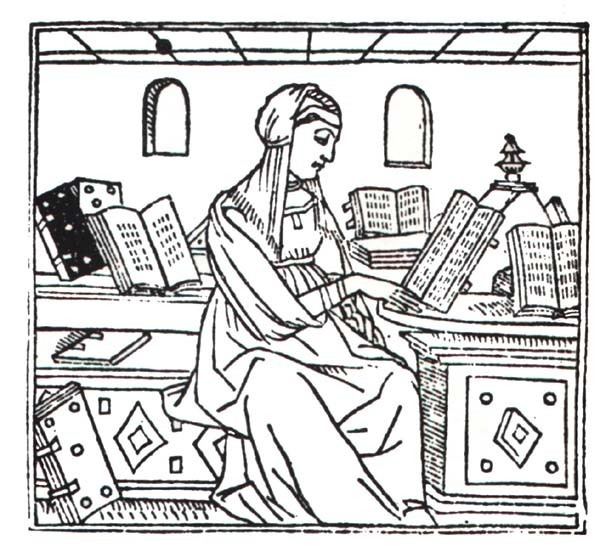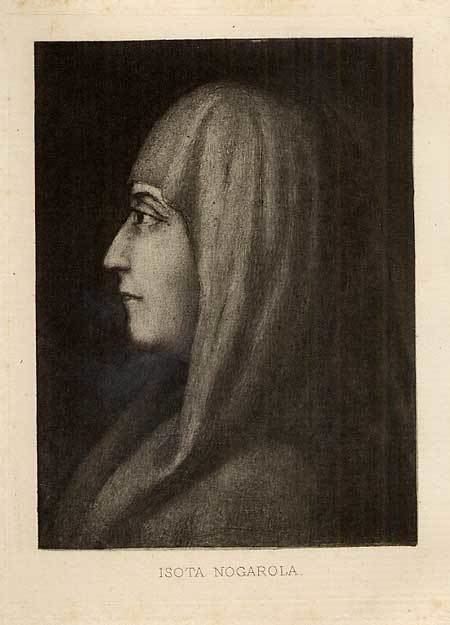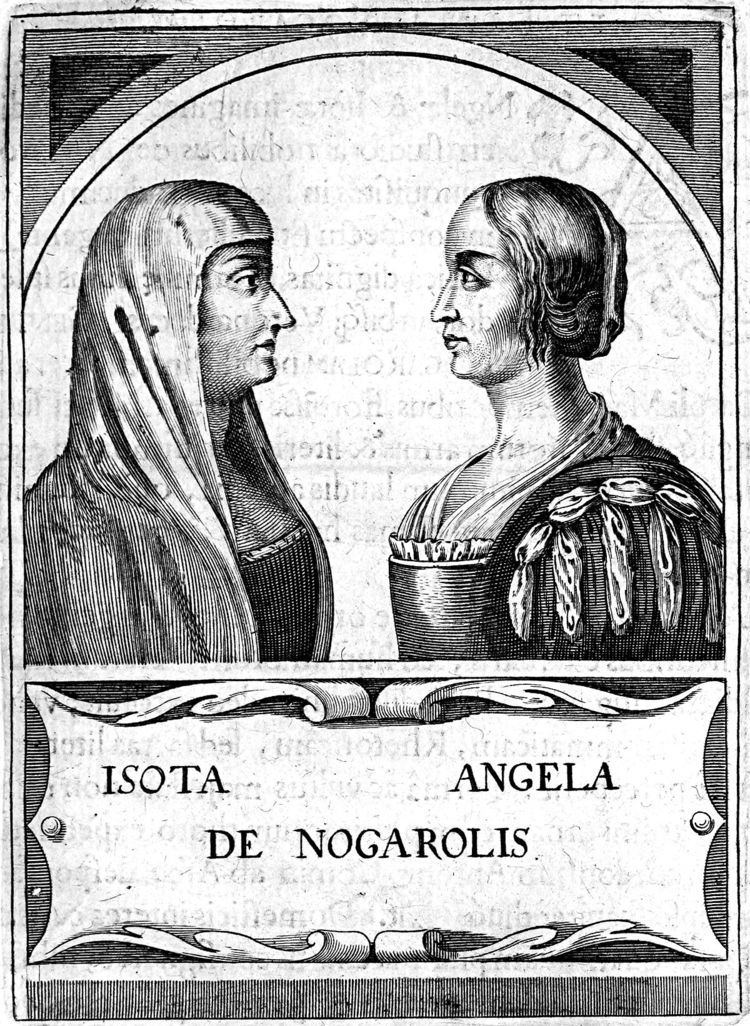Name Isotta Nogarola Role Writer | Died 1466, Venice, Italy | |
 | ||
Similar People Laura Cereta, Veronica Franco, Vittoria Colonna | ||
Isotta Nogarola (1418–1466) was an Italian writer and intellectual. She was passionate about her education, and became one of the most famous female humanists of the Italian Renaissance, inspiring generations of female artists and writers. Her most influential work was a literary dialogue, "Dialogue on Adam and Eve", in which she discussed the relative sinfulness of Adam and Eve, contributing to a centuries-long debate in Europe on gender and the nature of woman.
Contents

The Renaissance and humanism

Born into a well-to-do family in Verona, Italy, she was one of ten siblings, seven of which survived into adulthood. During Nogarola's life, Italy was going through its Renaissance. A new appreciation for art, education, and enriching culture surrounded Italians. Politically, Italy was divided into city-states ruled by extremely wealthy families; Genoa, Florence, and Venice are examples.

Men ruled all political procession, and in that time, there was no place for women in public society. Young boys studied humanism, which began in Florence in the 14th century and spread throughout Italy, and was the contemporary learning style for the wealthy. By focusing on works of ancient Rome and Greece, scholars believed humanist education would produce the most well equipped men with the best understanding of knowledge. Schools were set up to teach poetry, grammar, rhetoric, history, and moral philosophy, which would aid any boy in his future in politics. To become an actual humanist, a young man would have to send a letter to an already respected man of the field, and wait for a reply. If the response yielded endorsements and compliments for the prospective pupil, he would spread this news and gain the ground to begin his career.
Early intellectual life

Nogarola's mother, a widow, allowed her and her sister to be educated and therefore received an education from one of the finest teachers of the time. Her first tutor was Martino Rizzoni, who had been taught by the famous Guarino da Verona, one of the most forward humanist thinkers. Nogarola and her sisters received relatively the same education that a boy in a well-to-do-family would have received, excluding rhetoric, which was considered irrelevant for a woman to learn considering their lack of participation in public life in the male-dominated society.

Isotta proved to be an extremely able student, with literary works that began to gain acclaim throughout the region. Her eloquence in Latin was well respected. It concerned her that her fame did not come from the sheer volume of intelligence she seemed to possess, but from the novelty of her gender. At the time a common way to start a humanist career was to write to an established academic and publicise their praise or other feedback. She did this in 1437, choosing Guarino da Verona himself, a lofty goal. This news spread throughout Verona, which inspired much ridicule from women in the city. A year passed without a reply, and she furiously wrote a second letter to Guarino, in which she said:
"Why... was I born a woman, to be scorned by men in words and deeds? I ask myself this question in solitude... Your unfairness in not writing to me has caused me much suffering, that there could be no greater suffering... You yourself said there was no goal I could not achieve. But now that nothing has turned out as it should have, my joy has given way to sorrow... For they jeer at me throughout the city, the women mock me."
This time, Guarino da Verona wrote her back saying "I believed and trusted that your soul was manly...But now you seem so humbled, so abject, and so truly a woman, that you demonstrate none of the estimable qualities I thought you possessed."
Later life
Much of her work is detailed in letters to her peers.
She continued to receive criticism, which reached a new high when she was accused of being extremely promiscuous, evidence that was sourced in the opinion that a smart woman was never a virgin. However, the accuser never came forward. Tired of Verona's rejection, she moved to Venice in 1439, a trade city and a major port, filled with fine people and many cathedrals and palaces. She increased her studies and grew hungrier for knowledge, and became more well-known, but she was still labeled as an intelligent woman instead of just intelligent. Her stay in Venice was short, and she moved back to Verona to live with her brother and his family. She lived in celibacy and solitude, becoming devoutly religious, choosing instead to submerge herself in God and the Bible rather than humanism. This was seen as a more suitable occupation for a woman. She had infrequent visitors, as well as her family, and some correspondence with other intellectuals, particularly Ludovico Foscarini, a Venetian politician. The two would debate over philosophical questions, most famously over whose sin was greater: Adam's or Eve's. He visited her home often, participating in discussions with other Nogarola family members, and their relationship was never romantic. She received a wedding proposal in 1453, but on the advice of Foscarini, she declined. She embraced a life of celibacy, while investing in knowledge till, gradually her health began to fail. She died in 1466, aged 48.
